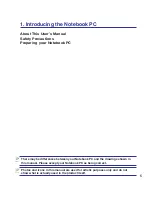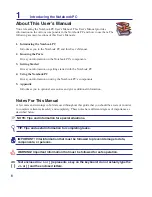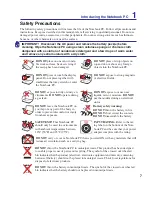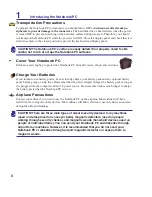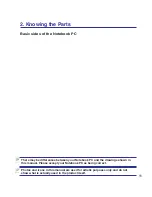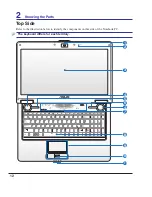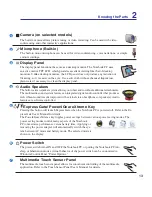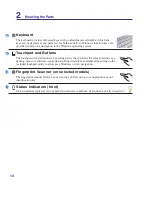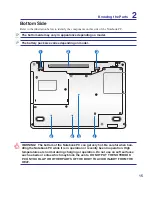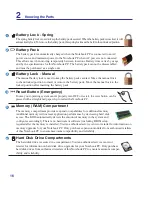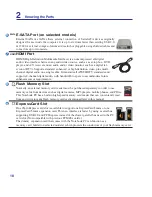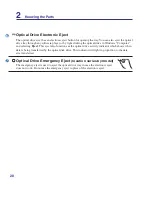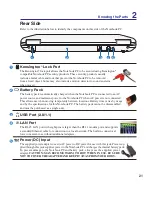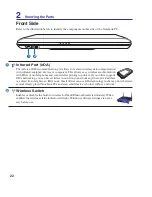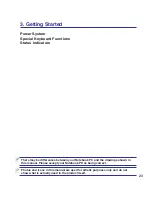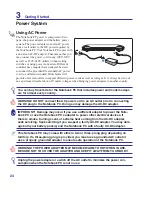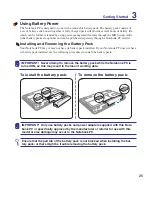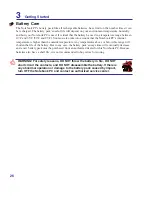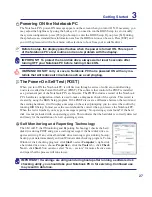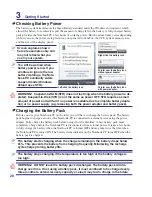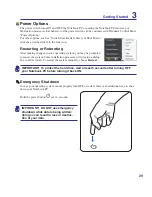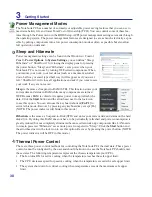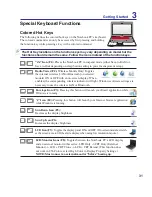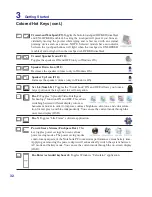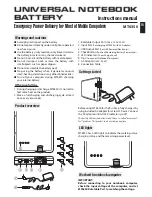
1
Knowing the Parts
2
Left Side
Refer to the illustration below to identify the components on this side of the Notebook PC.
ANT.
1394
E-SATA
HDMI
EXPRESS
1
2
6
9
3 4
8
3
4
2
1
2.0
USB Port (2.0/1.1)
The USB (Universal Serial Bus) port is compatible with USB 2.0 or USB 1.1 devices such
as keyboards, pointing devices, cameras, hard disk drives, printers, and scanners connected
in a series up to 12Mbits/sec (USB 1.1) and 480Mbits/sec (USB 2.0). USB allows many
devices to run simultaneously on a single computer, with some peripherals acting as additional
plug-in sites or hubs. USB supports hot-swapping of devices so that most peripherals can be connect-
ed or disconnected without restarting the computer.
Display (Monitor) Output
The 15-pin D-sub monitor port supports a standard VGA-compatible device such as a moni
-
tor or projector to allow viewing on a larger external display.
Air Vents
The air vents allow cool air to enter and warm air to exit the Notebook PC.
IMPORTANT! Make sure that paper, books, clothing, cables, or other ob-
jects do not block any of the air vents or else overheating may occur.
Antenna Input (on selected models)
The antenna input is for TV (on selected models) frequency signal and allows for use
with the provided digital TV antenna or input from subscription television services. The
provided antenna can receive digital TV. Cable service connection can receive digital
TV, analog TV, depending on paid services.
Note: Use the provided adapter for use
with coaxial connectors.
IEEE1394 Port (on selected models)
IEEE1394 is a high speed serial bus like SCSI but has simple connections and hot-
plugging capabilities like USB. The interface IEEE1394 has a bandwidth of 100-400
Mbits/sec and can handle up to 63 units on the same bus. IEEE1394 is also used in
high-end digital equipment and should be marked “DV” for Digital Video port.



